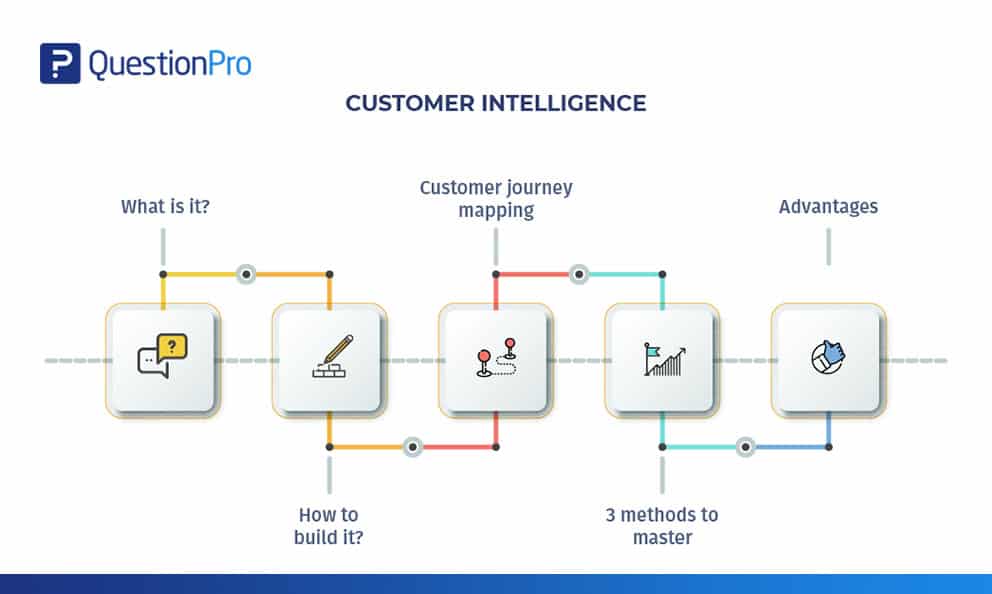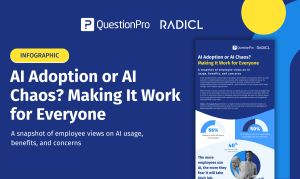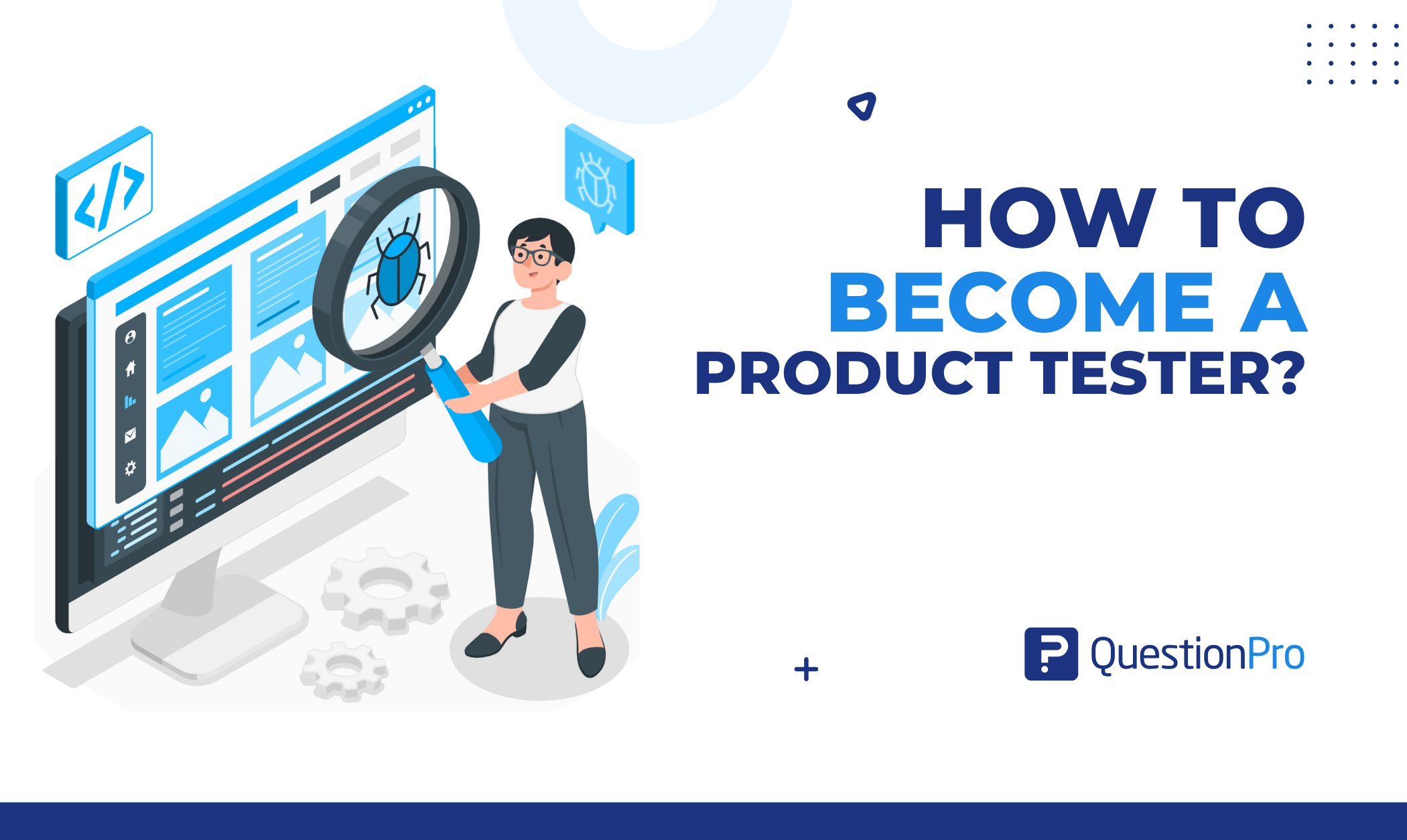
Customer intelligence, often referred to as customer intelligence CI, is a key component of this understanding. It involves gathering, analyzing, and utilizing data to gain insights into your customers’ behaviors, preferences, and needs.
By harnessing the power of customer intelligence, businesses can make informed decisions, enhance customer experiences, and drive growth. In this blog, we’ll delve into the world of customer intelligence, exploring its definition, the steps involved, and the software and tools that can help you leverage it effectively.
What is customer intelligence?
Customer intelligence is defined as the method of collecting and analyzing details related to customer data to be able to understand customer behavior in a detailed manner so that businesses know the best ways of interacting with individual customers.
In today’s digitally-driven world, most customers share their information with the businesses they interact with regarding their demographics, interests, purchase habits, their preference, and their needs.
A good marketer who will find ways to use this gold will be able to communicate with each customer in ways that will make each customer feel understood and valued.
This behavior certainly increases enhanced brand perception, positive word of mouth, and Net Promoter Score (NPS), which determines customer loyalty. I think I won’t be exaggerating in saying in this age of cut-throat competition, mastering the art of customer intelligence strategy is necessary for any business or organization to survive.
Learn More: 50+ Free Customer Surveys: Questions & Templates
Advantages of customer intelligence
Here are some key advantages of customer intelligence:
- With a well-executed customer intelligence system, an organization will be able to shift all customer interactions to be highly personalized. This personalization will, in turn, better customer satisfaction and help increase Net Promoter Score and similar attributes.
- This level of customer satisfaction generated unique brand affinity. There is no better way to build strong customer relations than to reduce customer churn, and as a business, you will be able to cater to customer needs efficiently.
- Customer intelligence, when done right, gives you clear visibility of all your marketing efforts. As customer intelligence primarily focuses on the entire customer journey, you can keep track of what marketing activities are bringing in better customer communication.
Types of customer intelligence
Customer intelligence data includes a wide range of information that helps businesses learn more about their customers’ behaviors, preferences and wants. Here are some common types of customer intelligence data:
Transactional data
Transactional data is crucial for businesses to track and understand customer purchasing behavior. By analyzing this data, companies can identify which products or services are most popular, the frequency of purchases, and even the seasonality of buying patterns.
For instance, an e-commerce company might notice that customers tend to buy winter coats in November, enabling them to plan targeted marketing campaigns and inventory management strategies accordingly.
Behavioral data
Behavioral data encompasses a wide range of customer interactions with a company. This includes tracking website clicks, analyzing how customers navigate through an app, monitoring social media engagement, and even assessing customer interactions with call centers. This type of data is invaluable for understanding customer behavior and optimizing various touchpoints of the customer journey.
For instance, a software company might use behavioral data to identify and resolve bottlenecks in their user onboarding process.
Psychographic data
Psychographic data delves into the psychological aspects of customers, including their personality traits, values, and attitudes. Marketers often use psychographic data to create highly targeted marketing campaigns.
For example, a fashion retailer might use psychographic data to tailor advertisements to customers who value sustainability, emphasizing their eco-friendly practices and products in marketing materials.
Demographic data
Demographic data provides insights into the basic characteristics of a customer base, including age, gender, income level, education, and geographic location. This type of data is essential for segmenting and targeting specific customer groups effectively.
For instance, a health and fitness company might use demographic data to tailor workout routines, nutritional advice, and marketing messages to different age groups, ensuring they resonate with their target audience.
Attitudinal data
Attitudinal data is a type of customer intelligence that focuses on understanding the attitudes, opinions, beliefs, and sentiments of customers. It provides insights into how customers feel about a product, service, brand, or specific aspects of their interactions with a company.
Attitudinal data helps businesses gain a deeper understanding of customer preferences, motivations, and the emotional aspects of their relationship with the brand. Here are some key aspects and sources of attitudinal data:
Building successful customer intelligence
There is a huge amount of customer data that flows into your company from numerous channels, including customer activity on company websites, apps, customer communications initiated by customers, etc. The following steps can be considered the building blocks for successful customer intelligence.
Collecting comprehensive customer data
The first task in gathering customer intelligence is the ability to collect all the customer information to form a single archive of customer data that will help you examine and analyze it effectively. This is known as a single customer view.
Implementing customer intelligence technology
The next immediate step is the infrastructure needed to analyze the customer data- technology. Modern customer intelligence empowers organizations to dwell deeper into customer insights based on customer lifecycle and customer relationship management: newly acquired customers, active customers, customer churn, and so on. Customer Lifetime Value forecasting helps in predicting customer churn.
Generating actionable customer insights
Once the customer data is collected and analyzed, it is ready to deliver actionable insights that will help an organization or business make informed decisions to suit their business needs. Customer intelligence not only allows organizations to get great clarity about customer interaction but also customer expectations.
Learn About: Customer Lifecycle
Customer intelligence through customer journey mapping
This elaborate 360-degree view of the customer journey is a proven model for understanding how, when, and where your customers have experienced your brand, creating a proper channel to gather customer intelligence data through communication and customer data collection.
In order to have a successful customer experience, you would want to measure your customer’s perception at a variety of stages over time. Here are some of the common customer intelligence platforms that can be used by businesses to gather meaningful insights through customer journey mapping:
Physical location
Suppose your customer comes to a physical location, like your store or restaurant, hotel, etc., then it is highly recommended to collect their feedback itself, like setting up a kiosk and setting up a quick poll question so that the customers don’t have to spend a lot of time giving their feedback.
This is one of the easiest ways to communicate with them, as they have just bought something from the store, dined at the restaurant, or even stayed at the hotel. The feedback will be spontaneous.
Sending emails
This is one of the easiest ways of getting in touch with your customers. It is extremely easy to automate this process so that a closed ticket or a successful sale generates an email from the system to be sent to the customers to collect data and establish communication with them.
Call center
This mode of communication can be used for either conducting telesales or even collecting customer data. You can get customer data either by email or a telephone-based interview. Please note if it’s a telephone-based interview, you don’t want to ask too many questions and annoy your customers.
Website
If customers are visiting your website often, for example, if you are an online retail store and most of the customer interaction happens through your website, then this is one of the best customer intelligence tools that will generate ways of communicating with your customers. Gathering feedback on your website is a holistic customer experience approach.
Learn About: Customer Data Infrastructure
3 essential ways of mastering customer intelligence
Mastering customer intelligence is essential for businesses looking to thrive in today’s competitive landscape. Here are three essential ways to do so:
Voice of Customer (VOC)
Voice of a customer: The first step is all about gaining genuine knowledge of important trends and discussions that come from customer inputs.
This is known as the voice of the customer, where the customer is free to give feedback through customer satisfaction surveys or questionnaires that are sent to them. The art here is to discover different channels through which their voice can be heard, including open-ended survey questions and using flexible tools to capture their valuable inputs.
Capture customer insights in real-time
Capturing customer insights will help you understand the grey areas in your business. A real-time insight will indicate where the business is working and where it isn’t. What is important here is your customers are damn intelligent, so as a business owner, you, too, should be intelligent.
Whenever a customer sends in a negative response, there should be an automatic email trigger to know more about the issue; this will help you solve the issue immediately.
Customer satisfaction is the key
Be proactive; don’t let the customer feedback disappear in the black hole. Make customer satisfaction the most important part of your organization or business. Let the customer feedback be of use to your organizational development and not just merely meaningless stacks of paper.
The above-mentioned 3 ways can be conducted using powerful online software. Such software enables organizations to conduct real-time customer surveys, collect automated survey data, and get robust analytics to measure customer happiness and experience, thus allowing them to collect customer intelligence.
Learn More: Customer Survey Software
Customer intelligence software- QuestionPro communities
If you are looking for comprehensive customer intelligence software, your search has landed you in the right place. QuestionPro Communities is a customer intelligence platform where you can:
1. Recruit your customers and develop customer interactions.
2. Collect their feedback in real time.
3. Improve their customer experience with your organization by simply deploying a survey or conducting a quick poll.
4. Reward your customers for their help in improving your business and also for their honest feedback.
QuestionPro Communities collects feedback at the click of a button and helps you analyze customer data like a pro. This customer intelligence platform is a great software tool for interacting with your customers and listening to their concerns/suggestions/feedback.
Ultimately, you can inspire your customers to be your loyal brand ambassadors, improving your Net Promoter Score extensively. Contact QuestionPro today to learn more or for free trial!
Frequently Asked Questions (FAQ)
Customer Intelligence refers to the process of gathering and analyzing data to gain insights into customer behavior, preferences, and needs.
Customer intelligence can benefit your business by enhancing personalization, building brand affinity, reducing churn, and optimizing marketing efforts.
Tools can be use for customer intelligence include CRM systems, analytics platforms, survey tools, social media monitoring tools, and predictive analytics software.







